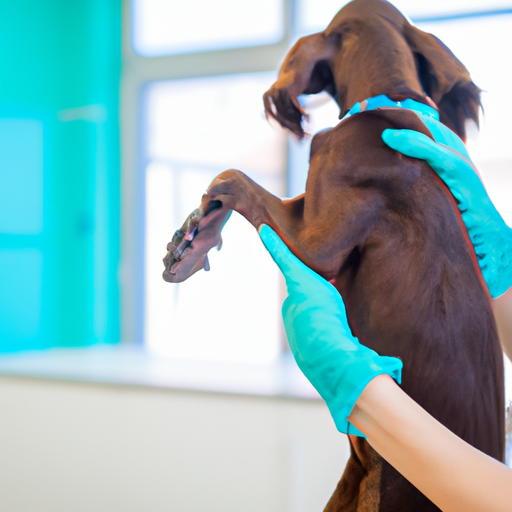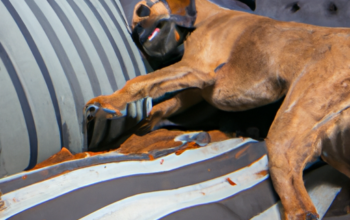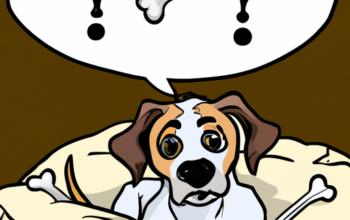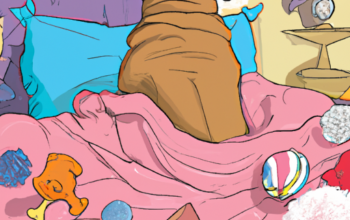As a devoted dog owner, there’s no doubt you wear many hats. From being their primary caregiver to their favorite playmate, your roles are diverse and critical. One of the more challenging tasks you may have to handle is expressing your dog’s anal glands – an essential part of canine health care.
While it might seem daunting or distasteful at first, understanding the importance of this procedure can help you embrace this necessity with confidence and poise.
Excessive scooting, licking or biting at the rear end, or even a peculiar fishy smell – these could all be signs that your dog is dealing with discomfort due to full anal glands. These small sacs located on either side of the rectum produce an oily substance that dogs naturally express when they defecate. However, some dogs aren’t able to empty these glands completely leading to discomfort and potential health issues down the line.
Thankfully, by gathering a few simple materials and following step-by-step guidance, you’re well-equipped to address this problem head-on.
Understanding Your Pet’s Anatomy
You’ll need to get really familiar with your furry friend’s anatomy to ensure you’re doing the best for their health, and yes, this includes those rarely mentioned anal glands. These structures are a small but important part of a dog’s digestive system. They are located on either side of your pet’s anus, at approximately four o’clock and eight o’clock positions if you imagine the anus as a clock face.
The glands produce an oily substance which is used by dogs to mark territory or communicate with other canines. Understanding where these glands are positioned is key in learning how to express them correctly without causing discomfort or injury.
In addition to understanding the location of the anal glands, it also helps to have a general understanding of your dog’s overall anatomy, particularly their Canine Skeletal Structure. This will enable you to handle your pet effectively during the process while avoiding undue stress on their bones and joints.
For instance, knowing that dogs have a less pronounced sacrum – the triangular bone at the base of the spine – compared to humans helps explain why they might react sensitively when pressure is applied near their tail area during gland expression. Furthermore, being aware that dogs’ abdominal wall muscles play critical roles in supporting organs like intestines further emphasizes why it’s crucial not to apply excessive pressure when expressing anal glands so as not cause any internal harm.
Identifying Signs of Discomfort in Your Dog
Observing your furry friend closely, it’s clear something isn’t quite right; could his pained whimpers and incessant scooting be a silent plea for help? Maybe, he’s dealing with an uncomfortable condition called anal gland impaction.
As a dog owner, understanding ‘Behavioral Changes’ and ‘Pain Indicators’ in your pet can be the key to identifying this issue early on.
-
Odd Posture: When sitting or walking, if your pooch is arching his back or keeping his tail tucked in more than usual, it may be a sign of discomfort.
-
Excessive Grooming: Dogs may lick or chew at their rear end excessively when trying to alleviate the irritation caused by impacted anal glands.
-
Changes in Bowel Movements: Difficulty defecating or changes in the consistency of stools can also indicate problems with their anal glands.
-
Unusual Odor or Discharge: If you notice an unusual smell coming from your dog’s rear end or spot any brownish discharge on their fur around that area, take it as a red flag.
Remember, these signs are not definitive proof of an anal gland issue, but they are strong indicators that something might be wrong. Always consult with a professional veterinarian if you notice any significant changes in your dog’s behavior or physical health.
Gathering Required Materials
Before diving into the process, it’s crucial to ensure you’ve got all the right tools on hand for this potentially messy task. Remember that material affordability should be a consideration, but don’t skimp on safety or quality. You’ll need disposable gloves for safe handling and hygiene. Next, gather plenty of clean towels or paper towels – things may get a little messy during the procedure. Additionally, having dog-friendly wipes or a damp cloth will help in cleaning your dog afterwards.
Another required item is a lubricant which can either be petroleum jelly or any vet-approved product; this aids in making the process more comfortable for your dog. Lastly, for dogs who find it stressful, treats are essential to maintain calmness and reward cooperation through the process. Here’s an easily understood table summarizing what you’ll need:
| Material | Purpose |
|---|---|
| Disposable Gloves | Safe Handling & Hygiene |
| Towels / Paper Towels | Clean-Up |
| Dog-Friendly Wipes / Damp Cloth | Post-Procedure Cleaning |
| Lubricant (Petroleum Jelly/Vet Approved Product) | Comforting Your Dog During The Process |
| Treats | Keeping Your Dog Calm & Rewarding Cooperation |
Ensure that you have all these materials at your disposal before starting with the actual process of expressing anal glands in dogs.
Step-by-step Procedure for Glandular Maintenance
Ironically, the glamorous life of a dog owner involves not only cuddles and fetch games but also certain unglamorous tasks like maintaining your furry friend’s glandular health.
Glandular Health Importance cannot be overstated as it contributes significantly to your pet’s overall comfort and wellbeing. Regular maintenance can prevent infections, abscesses, and other complications that may require professional veterinary care or even surgery.
For effective Home Veterinary Care, start by gathering all necessary supplies including latex gloves, paper towels, dog-safe wipes, and a lubricant like petroleum jelly.
Position your dog in a way that you have clear access to their rear end. Don’t worry if this feels awkward at first; with time you’ll both get used to the process.
Using gloved hands, apply a small amount of lubricant on your index finger then gently insert it into the rectum about an inch deep – don’t forget to reassure your pup during this process!
Feel for the glands which are located at roughly 4 o’clock and 8 o’clock positions around the rectal circumference. Once located, softly squeeze them towards each other until they release fluid onto your paper towel. This might take some practice so be patient with yourself and remember to always prioritize comfort over completion of the task.
After expressing the glands successfully, use dog-safe wipes for cleaning up any residual material left behind around this sensitive area.
Preventing Future Issues with Canine Health Care
Taking good care of your furry friend’s health now can save you both from potential discomfort and medical issues down the road. Part of this proactive approach involves regular check-ups with your vet, which can help catch any issues with the anal glands before they become serious problems. Your vet will be able to assess if there is a need for gland expression and guide you on how often it should be done based on your dog’s breed, age, and overall health status. Regular check-ups also allow your vet to monitor other aspects of your dog’s health and ensure that all preventative measures are in place.
Maintaining a balanced diet for your pet is another crucial aspect in preventing future anal gland issues. Diet plays a significant role as certain foods can help firm up your dog’s stool, which can naturally express the glands during defecation. High fiber diets are often recommended because they encourage bulkier stools that can stimulate the anal glands. Be sure to consult with a professional about what kind of food would be best suited for your furry friend’s needs. Here’s an example of what a canine health care routine might look like:
| Canine Health Care | Description |
|---|---|
| Regular Check-ups | These ensure early identification and treatment of potential issues including those related to anal glands |
| Balanced Diet | A high fiber diet helps in natural expression of anal glands through firmer stools |
| Exercise | Regular physical activity promotes overall well-being and reduces risk of obesity-related complications |
| Grooming | Keeps the fur clean reducing chances for skin infections while checking for abnormalities |
Remember always consult with professionals when dealing with canine healthcare matters – their expertise is invaluable in maintaining your pet’s wellbeing!
Frequently Asked Questions
What are the potential risks and complications of expressing a dog’s anal glands at home?
Infection risks are significant when expressing your dog’s anal glands at home. Mishaps can lead to injury or improper expression, causing discomfort or potential health issues. Always consult a vet for professional guidance.
Can a diet change help in reducing the need for anal gland expressions in dogs?
Yes, a diet change can help. Food allergies impact your dog’s anal gland health. High fiber benefits include reducing their need for gland expressions by promoting regular bowel movements and firming up stools.
What breeds are more prone to anal gland problems?
In breed specific care, genetic predispositions play a part. Small dog breeds like Chihuahuas, Toy Poodles, or Basset Hounds are more prone to anal gland problems due to their size and body structure.
How often should a dog’s anal glands be expressed?
Ironically, your dog’s rear end isn’t the first thing you’d think to monitor! Yet, based on frequency indicators and behavioral signals, anal glands should be expressed monthly. Consult a vet for specific advice.
Is expressing a dog’s anal glands a task that only a veterinarian should do?
While a vet’s professional assistance is recommended for expressing a dog’s anal glands, it’s not strictly necessary. However, be aware of potential home care consequences like incorrect technique leading to discomfort or infection.
Conclusion
In wrapping up, don’t let the ‘nitty-gritty’ of this process ruffle your feathers. It’s a piece of cake once you’ve got the hang of it, and your furry buddy will surely thank you for it.
Remember, a little regular TLC can go a long way in ensuring your dog’s health and happiness. So keep an eye out for any discomfort signs and don’t shy away from lending them a helping hand (quite literally!).
This is truly what being a pet parent is all about!



